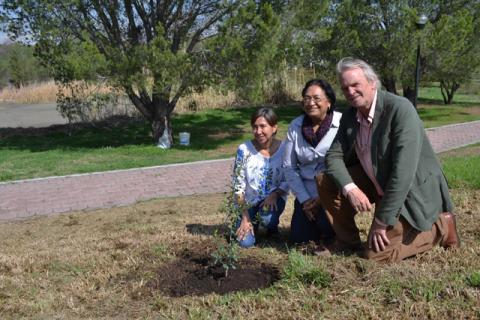
With more than 160 species, Mexico harbors more oaks than any other country. However, due to human activities, some of these are becoming rare and in danger of extinction. Quercus brandegeei is one of them, only found in some localities of Baja California Sur and in at least one hundred years no new seedlings have been established. For this reason, it is included in the red list of the International Union for the Conservation of Nature (IUCN), the largest and most diverse environmental network in the world created in 1948.
To guarantee its conservation, in the University Botanical Garden (JBU) of the BUAP, a 40 centimeter tall Quercus brandegeei was planted on one side of the floating shell. It is the first specimen planted ex situ in the country and which is added to the live oak collection of this institutional space, with 50 species, the largest of its kind in Mexico.
This action is derived from the World Tree Campaign, led by Morton Arboretum, the UNAM and the Vallarta Botanical Garden, in which the Maximum House of Studies in Puebla collaborates.
Maricela Rodríguez Acosta, director of the Herbarium and University Botanical Garden, explained that two years ago, 92 acorns of this species were received, coming from six different localities. Of this lot, 40 plants germinated, so that 50 percent success was achieved in this process. From this group the first copy was planted.
Continue reading here.

